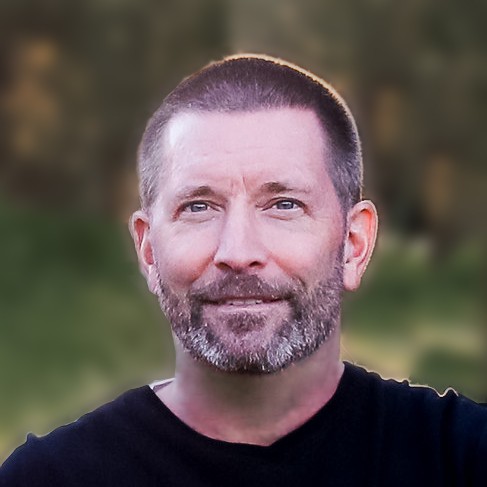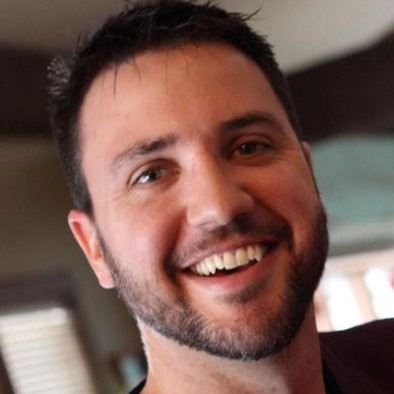Head of Product
15+ Years Driving Revenue Growth via Innovative Customer-Centric Products

Results:
- Built and launched a new hybrid SaaS/mobile platform which now has hundreds of thousands of active users and tens of millions of dollars in annual platform revenue (Hownd).
- Led 10 direct reports on an overall Product team of 15 (Hownd).
- Third-party valuation of the company increased 10x (Hownd).
- Doubled headcount and tripled valuation in two years, leading to a successful multi-billion exit (Accruent).
- Doubled revenue and headcount in three years (InEight).
- Created and launched a new business intelligence software company serving a worldwide customer base (DecisionEdge).
- An early employee who helped a Gartner Magic Quadrant leader grow revenue 7x and later have a successful exit via acquisition by Oracle (Primavera).
As a seasoned software product leader with over 20 years of experience driving revenue growth through the creation of innovative and customer-centric products, I am well-equipped to take on the role of Head of Product. Throughout my career, I have consistently delivered results by leading cross-functional teams in fast-paced and ambiguous environments, leveraging my expertise in product strategy, market research, and team management.
In my current role as Head of Product at Hownd, a seed-round martech/fintech e-commerce startup, our team has created and launched a new hybrid SaaS/mobile platform that now has hundreds of thousands of active users and tens of million in annual revenue. I led 10 direct reports on an overall Product team of 15, driving the development of innovative products aligned with the company’s overall strategic direction and user needs. Additionally, I am responsible for market research, competitive differentiation, and go-to-market strategy, as well as product roadmap prioritization.
Prior to my current role, I served as Director of Product Marketing at Accruent, a real estate / property technology (proptech) software provider. In this position, I successfully led a product team that gathered customer feedback to influence the product roadmap and aligned and integrated acquired companies to enhance our product offerings and ensure a smooth transition for customers. As a result, the company doubled its headcount and tripled its valuation in two years, leading to a successful multi-billion dollar exit.
Overall, my track record of driving revenue growth through the creation of innovative and customer-centric products, coupled with my expertise in product strategy, market research, and team management, makes me an ideal candidate for the role of Chief Product Officer.
"I had the pleasure of working with John on the Executive team at Hownd for four years. John is an accomplished Head of Product and adept at a wide range of disciplines. He is an active and encouraging teammate who raises the bar of professionalism. While at Hownd, he nurtured a great team and actively improved culture and process.
Ever curious and willing to help with anything, John continuously looks for ways to improve the product and delight his customers. Working with him made my job a joy, and I hope to work with him again."

Craig Cassidy
Chief Technology Officer
Hownd
Head of Product FAQs
What job titles have you had in the Product space?
Across my career, I have had many job roles in the Product space, these include VP of Product Management and then Head of Product (Hownd), Director of Product Marketing (Accruent), Director and then VP of Product & Alliances (InEight), VP of Product Marketing (SunGard), Product Manager, Services (Vertex), and Product and Alliance Manager (Primavera Systems). I am comfortable interfacing and working closely with adjacent departments, including Engineering, Marketing, and Sales, as well as with Executive teams. I understand each audience has different needs and modulate the level of detail based upon their needs.
Which Product Management tools are you most familiar with?
A: Atlassian products are the standard. Specifically, Jira and Confluence are two key tools that I am constantly working on as a product manager.
- Jira: The Product team is the owner of the stories and the owner of the backlog, so I am frequently in Jira, writing stories, tweaking existing ones, prioritizing, adding more voice-of-customer examples, etc.
- Confluence: I often joke with my team that 1/20th of the Product Manager’s role is “librarian” – that’s where Confluence comes in. I have built out multiple corporate intranets with Confluence: It is a key platform for documenting decisions, ideas, features, and releases, and providing the rest of the company with a “self-help” location for getting quick answers to their questions is more efficient and saves time for everyone. Confluence is also where my team and I create and store Opportunity Assessments and Product Requirement Documents / Product Specification Documents.
- Slack / Microsoft Teams – For team collaboration.
Does Product write the stories in Jira?
A: Yes, Product Management is the owner of story creation. Of course, other stakeholders – executives, Sales, Engineering, customers, and more – are all interested in the roadmap and play a role in story creation, but it is the responsibility of Product to write the stories. The only exception I have seen is when Engineering decides to break a story into tasks so that they more easily point them, put them in their own words, etc.
What goes into a typical story?
A: My teams effectively use an open-ended story that doesn’t tell Engineering HOW to do something. Instead, stories should explain the who, what, and why so that Engineering can know the context of the work they are being asked to do.
For example,
“As an administrative user, I Should Be Able To (ISBAT) add additional users in my organization with read-only privileges so that we increase security by avoiding password sharing and increase safety by not enabling other users from making unauthorized updates”
How would you describe your use of Agile methodology in product development?
A: We typically use a two-week sprint cycle, with daily stand-up meetings focused on obstacles and how to overcome them together. Each cycle, we have grooming meetings to go through recently added and upcoming stories in the backlog, a time when we also discuss the near- and mid-term roadmap so that the Engineering team is aware of the full business context of stories and can keep that in mind as they move forward. We also perform a bi-weekly sprint demo where the team can highlight their accomplishments and new features. As part of an iterative, lean methodology, each sprint cycle should result in a release of some usable functionality so that we can learn from real-world feedback and usage and continue to iterate.
How do you prioritize the roadmap?
A: Roadmap prioritization is part art and part science. It involves weighing multiple competing factors with limited resources. Those competing factors often include progressing towards strategic goals (new features that will unlock new business opportunities), customer requests (features needed by customers for their specific needs), resolving tech debt (making the system more efficient or easier to upgrade), sales requests from prospects, and more. Asking probing questions is often a way to help understand the true need “What are you trying to solve with this request?” and then “What if we provided this (something less than the full request) – would that satisfy the immediate need?”
What project that you led has had the most impact?
A: For me, naming a “highest impact” project is a little like naming a favorite child. There’s simply no correct answer, so I’ll share some of the key ones in the hope of answering the question.
My key projects include:
- Primavera + Oracle integration – I managed alliance partnerships at Primavera, and this one involved connecting our project management / scheduling platform with Oracle Applications to enable the flow of financial data from Oracle to Primavera, and project progress data from Primavera to Oracle. The initial relationship I built led to the eventual acquisition of Primavera by Oracle for hundreds of millions of dollars.
- Accruent Acquisition Integration Projects x4 – Accruent was a well-funded private-equity-backed company (Vista + Genstar) that had M&A growth as a key part of its business plan. During five months on an M&A integration team, I led projects that involved integrating four different acquired companies into ours. Each M&A launch team involved up to 25 people, across departments, and hundreds of tracked tasks. This inorganic growth led to the eventual sale of Accruent for $2 billion, a 3x return in two years.
- InEight Product Launches – I created and grew the Product Marketing team at InEight, and I led multiple product launches that expanded the capabilities of our growing platform in the Construction Project Management software space. Through successful growth, our company went from about 85 people when I got there to over 250 people in the three years I was there.
- Release of Hownd 1.0 – Startup life can be exhilarating, but also exhausting. In October 2019, I recruited and led a team of developers and product leaders to launch a completely new SaaS + mobile platform within a 9-month timeframe. This created a completely new product offering for the company which now has over 300,000 active users.
A:
- Primavera + Oracle – I was the relationship leader between the companies for approximately 7 years – this involved guiding our internal developers to build integration and then marketing the combination of our products to enterprise companies around the world. I built the goodwill and positive momentum between our companies that led to its eventual acquisition in 2008.
- Accruent Acquisitions – I led the cross-functional M&A Launch Teams for four different acquisitions, which meant tracking (literally) hundreds of tasks for each acquisition across the entire company. For example, it meant creating internal and external FAQ documents about the acquisition for both existing customers and customers of the acquired company, presentation decks, etc. It also involved understanding the systems and people in the acquired company to recommend the path forward to getting them fully integrated into our company.
- InEight Product Launches – My time at InEight was active – we had just been acquired by Kiewit (one of the largest construction engineering firms in the country), and we were releasing new products at a rapid pace. I was the launch-team leader, which involved bringing together cross-departmental teams over multiple weeks and months to ensure internal alignment with each new product release, along with coordinated external communications.
- Hownd 1.0 Launch – As the Chief Product Officer, my role involved coordinating all the different teams in the company to ensure alignment with the features, benefits, and differentiated value of our new platform. I managed the roadmap and led the launch team as we launched this brand-new platform.
A: Results of these projects include:
- Oracle + Primavera – As a result of my efforts, the positive relationship and connections between our companies led to the eventual acquisition of Primavera by Oracle for hundreds of millions of dollars, resulting in positive outcomes for the two company co-founders and all of the employees with stock options.
- Accruent Acquisitions – The rapid growth of Accruent due to our inorganic M&A growth was quite attractive to a suitor, and the company was acquired in 2018 for $2 billion, a 3x valuation from 2016 levels when I first arrived.
- InEight – As mentioned, my time at InEight was one of rapid growth, with headcount and revenues doubling during my time there. This created a foundation that has since led to the company more than doubling its revenue and headcount since I left in 2016.
- Hownd – The new Hownd platform now has over 1,000 merchants and over 300,000 active consumer users (from zero), helping the company achieve its strategic goals of getting more and more involved with direct-to-consumer engagement.
How many product teams have you led?
A: For the past 15 years, I have hired, led, and coached 4 different product teams: Hownd, Accruent, InEight, and SunGard. These product teams ranged in size from 3 product marketers and content writers at SunGard to a total of 15 at Hownd, which included Product Managers, Product Specialists, UI/UX designers, in-house engineers, and outsourced developers.
How many cross-functional launch teams have you led?
A: I’ve lost count of the number of cross-functional teams I’ve led, if I had to guess, it would be at least 20 different teams. The fact is that every Product role involves cross-functional team collaboration. This is especially true around launches of new products and mergers and acquisition integration efforts.
How do you resolve conflicts on your team?
A: One of the key concepts I’ve learned to appreciate is “disagree and commit”. That is, it’s fine and normal for a group of people looking at a problem that can be solved in multiple ways to have different ideas about how to address it. However, once the team comes together and decides on a consensus path forward, it’s time to commit. In this way, everyone’s voice is heard and included in the decision-making process, though the team can move forward.
Can you tell us about your previous experience as a Chief Product Officer?
A: Yes, I have worked as a Chief Product Officer for Hownd for four years where I was responsible for managing the product development team and driving the product strategy. One of the highlights of this time was releasing a new SaaS and mobile platform that now has over 300,000 active users.
What is your approach to product development?
A: My product development process involves first understanding the strategic business goals. I then conduct user research, define product requirements, create a roadmap, and collaborate with cross-functional teams to develop and launch products using the 2-week Agile sprint cycle. Throughout the process, I also gather feedback from stakeholders to ensure we are meeting the needs of our customers.
Can you give an example of a successful product launch you led?
A: Yes, I led the successful launch of Hownd in late 2019, which now has over 300,000 users and received positive feedback from customers. The launch involved extensive market research, collaboration with cross-functional teams, and strategic planning.
How do you measure the success of a product?
A: Beyond the overall impact on the business, I measure the success of a product by tracking metrics such as user engagement, customer satisfaction, and revenue growth. I also use qualitative feedback from customers and stakeholders to understand the impact of the product on the business.
How do you stay up-to-date with industry trends?
A: I stay up-to-date with industry trends and emerging technologies by attending conferences, reading industry publications, and networking with other professionals in the field. I am also an avid reader of general business publications such as The Wall Street Journal and follow emerging trends, such as generative ai, via social media and blog posts by thought leaders.
Can you describe a challenging product development project you faced?
A: Yes, the launch of Hownd was a challenging product development project because we had never introduced a mobile component to our platform. The project required extensive research and collaboration with external partners. However, with a dedicated team and a strategic approach, we were able to successfully launch the product.
How do you balance short-term and long-term product goals?
A: Balancing short-term and long-term product goals involves understanding the company’s strategic objectives and prioritizing features and initiatives that align with those goals. I believe in regularly reviewing progress and making adjustments as necessary to ensure that both short-term and long-term goals are being met.
"John and I worked together during his time at Hownd as Chief Product Officer. He was in charge of vision, roadmap, and feature prioritization for the entire Hownd platform. During our time together we delivered a brand new SaaS + mobile platform that now supports hundreds of thousands of users.
Working with John was truly a pleasure. His enthusiasm and positive outlook helped to keep our team focused on problem solving and overcoming challenges.
John's leadership style contributed to a culture of open communication, collaboration, and mutual respect that set the standard for other teams within our company.
I would happily welcome the opportunity to work with him again."

Nathan Agersea
Senior Developer
Hownd
